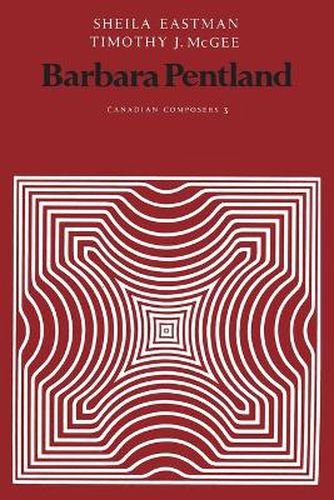Readings Newsletter
Become a Readings Member to make your shopping experience even easier.
Sign in or sign up for free!
You’re not far away from qualifying for FREE standard shipping within Australia
You’ve qualified for FREE standard shipping within Australia
The cart is loading…






Barbara Pentland and her music have long been the centre of controversy. As a woman in what many saw as a man’s field, her role as composer provoked negative reactions into the 1950s, and her music receives a wide range of responses to this day. Yet even her severest critics acknowledge the highly personal and impassioned quality of her compositions. This book looks at Pentland’s life and career as she moves from her native Winnipeg to study in Montreal, Paris, and New York and at Tanglewood with Aaron Copland, intermittently returning to her home town and gradually becoming known as a performer and composer. The authors discuss various works including Studies in Line (19410, which was composed in a highly linear idiom and epitomized her early works; Sonata for Violin and Piano (1946), which was based on French-Canadian folk tunes and reflected Copland’s abstractness and use of rhythm; and the highly tonal Symphony No. 2 (1950). Her visit to Europe in 1955 was the catalyst for a profound shift in her work from the techniques she had adapted from Copland and Hindemith to an elaboration of her own highly distinctive serialist technique. Since 1958, Pentland’s output has been prodigious: fifty works all typified by a marvellously economical use of materials. Some of the most controversial are treatments of the words of modern writers and are inspired by Pentland’s passionate concern about contemporary events. This volume includes a large number of musical examples from her work and photographs of the composer and her colleagues and interpreters.
$9.00 standard shipping within Australia
FREE standard shipping within Australia for orders over $100.00
Express & International shipping calculated at checkout
Barbara Pentland and her music have long been the centre of controversy. As a woman in what many saw as a man’s field, her role as composer provoked negative reactions into the 1950s, and her music receives a wide range of responses to this day. Yet even her severest critics acknowledge the highly personal and impassioned quality of her compositions. This book looks at Pentland’s life and career as she moves from her native Winnipeg to study in Montreal, Paris, and New York and at Tanglewood with Aaron Copland, intermittently returning to her home town and gradually becoming known as a performer and composer. The authors discuss various works including Studies in Line (19410, which was composed in a highly linear idiom and epitomized her early works; Sonata for Violin and Piano (1946), which was based on French-Canadian folk tunes and reflected Copland’s abstractness and use of rhythm; and the highly tonal Symphony No. 2 (1950). Her visit to Europe in 1955 was the catalyst for a profound shift in her work from the techniques she had adapted from Copland and Hindemith to an elaboration of her own highly distinctive serialist technique. Since 1958, Pentland’s output has been prodigious: fifty works all typified by a marvellously economical use of materials. Some of the most controversial are treatments of the words of modern writers and are inspired by Pentland’s passionate concern about contemporary events. This volume includes a large number of musical examples from her work and photographs of the composer and her colleagues and interpreters.